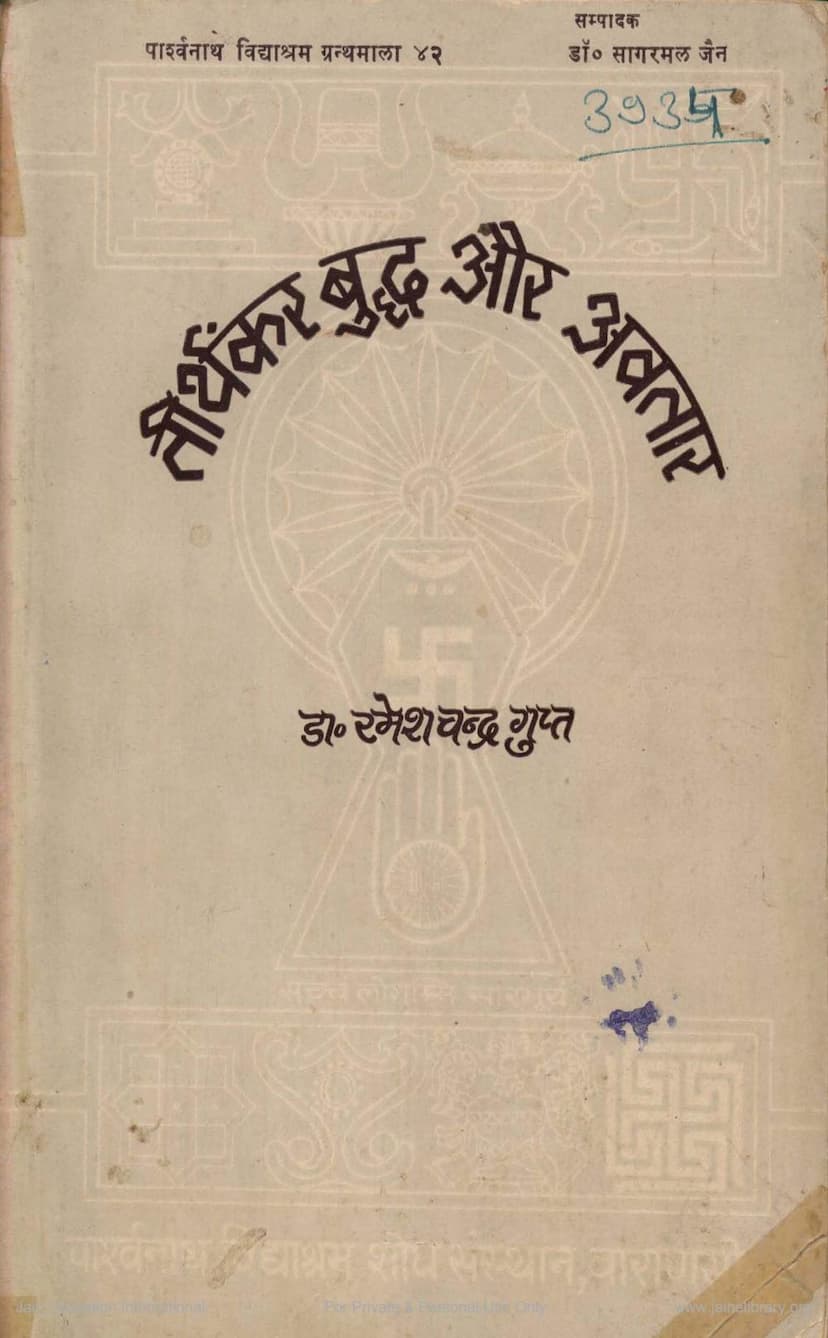Tirthankar Buddha Aur Avtar
Added to library: September 2, 2025

Summary
The book "Tirthankar Buddha aur Avtar: Eka Adhyayan" (Tirthankara, Buddha, and Avatar: A Study) by Dr. Rameshchandra Gupta, published by Parshwanath Shodhpith Varanasi in 1988, is a comparative study of the concepts of Tirthankara in Jainism, Buddha in Buddhism, and Avatar in Hinduism.
The author, Dr. Rameshchandra Gupta, completed this research for his Ph.D. at Banaras Hindu University in 1986. The book aims to find the common threads and differences within these central figures of three major Indian religions.
Key Aspects of the Book:
- Comparative Study: The core of the book is a detailed comparison of the concepts of Tirthankara, Buddha, and Avatar. It analyzes their origins, development, characteristics, and functions within their respective religious traditions.
- Indian Religious Traditions: The book delves into the foundational concepts of Jainism, Buddhism, and Hinduism, exploring their respective ideologies and how these central figures represent the ultimate ideals and objects of worship in each.
- Historical and Philosophical Analysis: Dr. Gupta examines the historical evolution of these concepts, tracing how the ideas of Tirthankara, Buddha, and Avatar developed over time. He also provides a philosophical analysis, highlighting the theological and ethical dimensions of each figure.
- Key Figures:
- Tirthankara (Jainism): The book explores the meaning of the term "Tirthankara," their unique qualities, the concept of past, present, and future Tirthankaras, and the spiritual discipline required to attain this status. It distinguishes Tirthankaras from Arhats and other enlightened beings.
- Buddha (Buddhism): It discusses the concept of "Buddhahood," its development in Buddhism (from Hinayana to Mahayana), the factors contributing to the evolution of concepts of compassion and devotion related to the Buddha, and the differences in the portrayal of the Buddha in different Buddhist schools.
- Avatar (Hinduism): The study covers the concept of Avatar in Hinduism, its primary purpose, and its historical evolution, with a detailed discussion of the Dashavatara (ten principal avatars).
- Inter-religious Influence: The book acknowledges the mutual influence between these Indian religious traditions, suggesting that these concepts did not arise in a vacuum but were shaped by their shared cultural and philosophical environment.
- Cross-Cultural Comparisons (Briefly): In the introductory chapter, the author also touches upon similar concepts in Zoroastrianism, Judaism, Christianity, and Islam to provide a broader context.
- Structure: The book is divided into six chapters, starting with an introduction, then dedicating chapters to Tirthankaras, Buddha, and Avatars individually, followed by a comparative analysis, and concluding with a summary.
- Detailed Lists: The book includes detailed lists of Tirthankaras, past and future Buddhas, and various avatars, providing names, genealogies, and sometimes descriptions of their lives and teachings, drawing from various Jain and Buddhist scriptures and traditions.
- Emphasis on "Paramarthvaad" vs. "Avatarvaad": A significant point of comparison is the distinction between the Jain concept of "Uttaranvaad" (ascension through spiritual evolution) and the Hindu "Avatarvaad" (descent of the divine). The book highlights that while avatars are divine beings descending, Tirthankaras are perfected souls who attain their status through their own spiritual efforts.
- Theological and Philosophical Underpinnings: The study explores the philosophical underpinnings of these concepts, including ideas about the nature of the soul, liberation, karma, and the path to spiritual realization.
- Impact and Contribution: The book aims to foster interfaith harmony and understanding by highlighting the common goals and aspirations that unite these diverse religious traditions, despite their distinct paths and doctrines.
In essence, "Tirthankar Buddha aur Avtar: Eka Adhyayan" is a scholarly work that seeks to provide a comprehensive and comparative understanding of three pivotal figures in Indian religious history, emphasizing their roles as spiritual guides, exemplars, and ultimate objects of veneration.